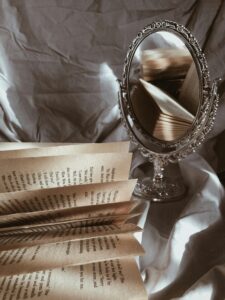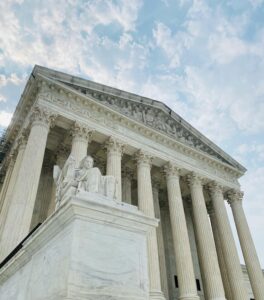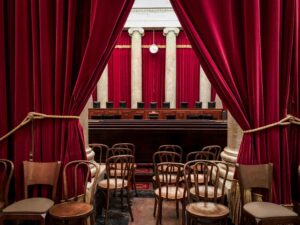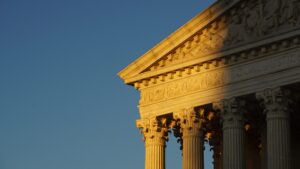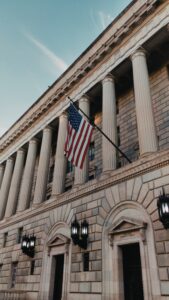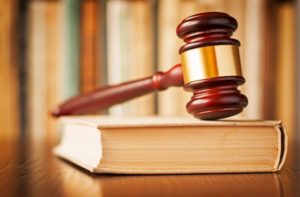
Will Coltzer
The Supreme Court is set to determine whether the government can regulate the way social media platforms (“Platforms”) like X,[1] Facebook, and YouTube moderate third-party content.[2] Although social media has become ubiquitous and has been described as the modern “public forum,”[3] there remain serious questions about the authority of the government to require private entities to host certain third-party content. Must people rely on Elon Musk and Mark Zuckerberg—two of the wealthiest people in the world—to ensure “free speech around the globe”?[4]
The Freedom of Speech is one of the most essential tenants of American democracy, yet that right is not absolute.[5] The First Amendment prohibits States from passing laws that “abridg[e] the Freedom of Speech.”[6] Thus, because Platforms are private businesses, individuals cannot use the First Amendment to pursue recourse against censorship on a private platform.[7] Instead, States have attempted to enforce the ideals of free speech by regulating Platforms content moderation policies.[8] The question remains whether this regulation infringes the Platforms own right to control its “speech.”
On February 26, 2024, the Court will hear oral arguments to address these questions in Moody v. NetChoice[9] and NetChoice v. Paxton.[10] In 2021, Texas and Florida passed laws that prevented large Platforms from censuring third-party created content.[11] The proponents of these laws argue Platforms “have unfairly censored” and “shadow banned” users based on political speech‚— particularly conservative speech.[12] In response, NetChoice, a trade association that represents large technology businesses including Meta,[13] filed actions in the Northern District of Florida and the Western District of Texas seeking preliminary injunctions against the State’s regulation of Platforms.[14]
On appeal, the Eleventh and Fifth Circuit split on the key constitutional questions. Now, the two main issues before the Court are: (1) whether Platform’s moderation of content is considered “speech” for First Amendment analysis, and (2) whether Platforms are “common carriers” who hold themselves open to the public.[15] This article will address both issues in turn, concluding that the Court should uphold the States regulations under the common carrier doctrine.
- The “Speech” Issue
The Court must first ascertain whether Texas and Florida’s regulations affect the Platform’s “Speech.”[16] In exercising some “doctrinal gymnastics,”[17] the Eleventh Circuit found Florida’s statute violates the Platform’s First Amendment rights because it removes its “editorial judgment” over the content published on its private platform.[18] On the other hand, the Fifth Circuit found the Texas statute “does not regulate the Platform’s speech at all; it protects other people’s speech and regulates the Platform’s conduct.”[19]
These conflicting interpretations derive from a complex body of case law that has attempted to apply the same First Amendment principles to vastly different mediums of communication.[20] The Court is tasked with comparing social media to the mediums in four major cases: Miami Herald Pub. Co. v. Tornillo,[21] Hurley v. Irish-Am. Gay, Lesbian & Bisexual Grp. of Bos.,[22] PruneYard Shopping Center v. Robbins,[23] and Rumsfeld v. Forum for Acad. & Inst. Rts, Inc. (“FAIR”).[24] These cases establish two lines of precedent.
- Editorial Judgments
The first line of precedent, which derives from Miami Herald and Hurley, establishes the right of publishers to exercise “editorial judgment” over the content they publish.[25] In Miami Herald the Court held that a newspaper’s “choice of material” and the “treatment of public issues and public officials—whether fair or unfair—constitute the exercise of editorial control and judgment” protected by the First Amendment.[26] Most recently, the Court extended the editorial-judgment principle in Hurley.[27] There, the Court rejected a Massachusetts public accommodation statute because it infringed on the parade organizer’s First Amendment right to control the message of the parade.[28]
Together, these editorial judgment cases can be read two ways. First, these cases may establish a private entity’s decisions about disseminating third-party content are “editorial judgments protected by the First Amendment,” as the Eleventh Circuit found.[29] Alternatively, editorial judgments may be merely a factor rather than a “freestanding category of protected expression,” as the Fifth Circuit found.[30] The first reading is more persuasive; the decision to accept or reject third-party content creates a message that a reasonable user would perceive. A private speaker “who chooses to speak may also decide ‘what not to say’ and ‘tailor’ the content of his message as he sees fit.”[31] The message need not be substantially tailored.[32] Before evaluating the first issue here, these editorial judgment cases must be placed in contrast to the “host speech” cases.
- Hosting Speech
The second line of precedent, which derives from PruneYard and FAIR, establishes the government may sometimes compel private actors to “host other’s speech.”[33] In PruneYard, the Court affirmed a state court’s decision that required a privately owned shopping mall to allow members of the public to circulate pamphlets on its property.[34]Importantly, the mall owner did not allege this circulation affected the owner’s autonomy to speak.[35] Extending PruneYard, the Court in FAIR unanimously upheld a federal statute—the Solomon Amendment—that required law schools to allow military recruiters the same access to campuses as other employers.[36] The Court distinguished FAIR from the editorial judgment cases by noting “the schools are not speaking when they host interviews and recruiting receptions.”[37] Together, these cases apply to a narrow set of facts where “hosting” third-party speech does not interfere with the owner’s right to speak.[38]
How will the Court decide the “Speech” issue?
The Court is likely to find Platforms have First Amendment protections under the editorial judgment line of cases. Platforms require terms and conditions, remove content based on their guidelines, and are in the business of curating certain edited experiences.[39] Algorithms curate content for users based on past activity.[40] The fact this is accomplished by an algorithm does not change the constitutional analysis.[41] Because Platforms are in the business of curating a tailored experience and they exercise substantial control over the content published, the Court will likely find social media more analogous to the newspaper publisher in Miami Herald than the law school in FAIR. Furthermore, the very justification for States passing these statutes in Texas and Florida was the alleged threat of a leftist agenda in BigTech against conservative speech.[42] Overall, social media companies should still retain the First Amendment protection over third-party speech published on their platform. However, social media platforms that uniquely hold themselves out as public forums may still be vulnerable to public accommodation laws under the common carrier doctrine.
- Common Carrier Issue
The State has an alternative argument that is gaining steam among key Supreme Court Justices: the “common carrier” doctrine.[43] This common law doctrine allows States to pass public accommodation laws that regulate businesses that hold themselves open to the public, even if that regulation affects the private actor’s speech.[44] The doctrine derives from English common law and was incorporated early on into the Court’s analysis of the original meaning of “Freedom of Speech.”[45]
The Supreme Court’s recent decision in 303 Creative v. Elenis[46] illuminates the doctrine’s potential application to online platforms. In 303 Creative, the Court held a Colorado statute that required a private website to accommodate certain messages was an unconstitutional infringement on the private website’s Freedom of Speech because the website did not have “monopoly power” over a public utility.[47] Importantly, the three dissenting Justices critiqued the majority for requiring “monopoly power,” which may signal a lower threshold for upholding public accommodation laws among the liberal wing of the Court.[48] Still, the Court has not addressed the unique application of the doctrine to social media, which is likely distinguishable from the small website in 303 Creative..
The common carrier doctrine is the State’s best argument for upholding Texas and Florida’s regulations for three reasons. First, several key justices have signaled support for the theory.[49] Second, it is the best tool to align our modern understanding of social media with the original meaning of the Constitution while leaving needed room to apply the same legal principles to past and future technology. Finally, using the monopoly power concept espoused in 303 Creative, the Court could distinguish large social media companies that hold themselves out as “public forums” from other websites that do not receive the liability benefits of this common carrier designation.[50] Social media companies are not liable for the content of third parties under Section 230.[51] Because these Platforms receive the legal benefit of being a common carrier by avoiding liability, States should have the power to ensure the platforms meet constitutionally permissive public accommodations laws.[52] You cannot have your cake and eat it too: either social media businesses open their Platforms to the public, like a restaurant, or they close their doors and should be liable for the third-party content circulated, like a newspaper publisher.
- Conclusion
In short, the Court should uphold the regulations in Moody and Paxton to promote public discourse. The Court must reconcile competing precedents and use century-old doctrines to evaluate our First Amendment rights on social media.[53] If social media is to remain a “public square,” [54] the Court should ensure these businesses are subject to some legal accountability. The State’s best argument is perhaps the most intuitive: the First Amendment should not be morphed into a tool for upholding censorship of political speech on the modern equivalent of the public square.[55] The Court should recognize the unique way social media affects modern discourse and use these flexible legal standards, especially the common carrier doctrine, to uphold the ideals of free speech.
[1] Twitter was renamed to X in the summer of 2023. See Ryan Mac & Tiffany Hsu, From Twitter to X: Elon Musk Begins Erasing an Iconic Internet Brand, N.Y. TIMES (July 24, 2023), https://www.nytimes.com/2023/07/24/technology/twitter-x-elon-musk.html#:~:text=Late%20on%20Sunday%2C%20Elon%20Musk,letter%20of%20the%20Latin%20alphabet.
[2] NetChoice, L.L.C. v. Paxton, 49 F.4th 439, 447 (5th Cir. 2022), cert. granted in part sub nom. Netchoice, LLC v. Paxton, 216 L. Ed. 2d 1313 (Sept. 29, 2023) (hereinafter “Paxton”); NetChoice, LLC v. Att’y Gen., Fla., 34 F.4th 1196, 1212 (11th Cir. 2022), cert. granted in part sub nom. Moody v. Netchoice, LLC, 216 L. Ed. 2d 1313 (Sept. 29, 2023), and cert. denied sub nom. NetChoice, LLC v. Moody, 144 S. Ct. 69 (2023) (hereinafter “Moody”)..
[3] Packingham v. North Carolina, 582 U.S. 98, 107–108 (2017).
[4] Billy Perrigo, ‘The Idea Exposes His Naiveté.’ Twitter Employees On Why Elon Musk Is Wrong About Free Speech, Time (Apr. 14, 2022, 2:04 PM), https://time.com/6167099/twitter-employees-elon-musk-free-speech/ (noting that Musk claimed his reason for purchasing Twitter was to spread free speech in an SEC filing report).
[5] Gitlow v. People of State of New York, 268 U.S. 652, 666 (1925) (“It is a fundamental principle, long established, that the freedom of speech and of the press which is secured by the Constitution, does not confer an absolute right to speak or publish, without responsibility[.]”); Schenck v. United States, 249 U.S. 47, 52 (1919) (“The most stringent protection of free speech would not protect a man in falsely shouting fire in a theatre and causing a panic.”).
[6] U.S. Const. amend. I (“Congress shall make no law . . . prohibiting the free exercise thereof; or abriding the Freedom of Speech, or of the press.”); Gitlow, 268 U.S. at 666 (incorporating the Freedom of Speech against the States through the Due Process Clause of the Fourteenth Amendment).
[7] Grace Slicklen, For Freedom or Full of It? State Attempts to Silence Social Media, 78
U. Miami L. Rev. 297, 319–23 (2023); see also Manhattan Cmty. Access Corp. v. Halleck, 139 S. Ct. 1921, 1926 (2019) (noting that the Freedom of Speech is a shield that “constrains governmental actors and protects private actors”).
[8] See S.B. 7072, 123rd Reg. Sess. (Fla. 2021); H.B. 20, 87th Leg. Sess. § 1201.002(a) (Tex. 2021).
[9] Supreme Court Docket for NetChoice v. Moody, Supreme Court, https://www.supremecourt.gov/docket/docketfiles/html/public/22-277.html (last visited Jan. 21, 2023)
[10] Supreme Court Docket for NetChoice v. Paxton, Supreme Court, https://www.supremecourt.gov/docket/docketfiles/html/public/22-555.html (last visited Jan. 21, 2023)
[11] See S.B. 7072, 123rd Reg. Sess. (Fla. 2021); H.B. 20, 87th Leg. Sess. § 1201.002(a) (Tex. 2021).
[12] Moody, 34 F.4th at 1205.
[13] Slicklen, supra note 7 at 307.
[14] NetChoice, LLC v. Moody, 546 F. Supp. 3d 1082, 1096 (N.D. Fla. 2021) (finding Florida’s legislation “is plainly content-based and subject to strict scrutiny . . . [which] [t]he legislation does not survive”); NetChoice LLC v. Moody, 546 F. Supp. 3d 1092, 1100–01 (W.D. Tex. 2021) (granting a preliminary injunction against the State enforcement of Texas legislation, but finding the constitutional question a close call).
[15] Moody, 34 F.4th at 1210.
[16]Id. at 1209 (“In assessing whether the Act likely violates the First Amendment, we must initially consider whether it triggers First Amendment scrutiny in the first place—i.e., whether it regulates ‘speech’ within the meaning of the Amendment at all. In other words, we must determine whether social-media platforms engage in First Amendment-protected activity.” (citations omitted)).
[17] Paxton, 49 F.4th at 455 (rejecting the “Platforms’ efforts to reframe their censorship as speech” because “no amount of doctrinal gymnastics can turn the First Amendment’s protections for free speech into protections for free censoring”).
[18] Moody, 34 F.4th at 1213–14 (“Social-media platforms exercise editorial judgment that is inherently expressive.”).
[19] Paxton, 49 F.4th at 448.
[20] Brown v. Ent. Merchants Ass’n, 564 U.S. 786, 790 (2011) (“[W]hatever the challenges of applying the Constitution to ever-advancing technology, ‘the basic principles of freedom of speech and the press, like the First Amendment’s command, do not vary’ when a new and different medium for communication appears.”).
[21] 418 U.S. 241 (1974).
[22] 515 U.S. 557 (1995).
[23] 447 U.S. 74 (1980).
[24] 547 U.S. 47 (2006).
[25] Moody, 34 F.4th at 1210–1211.
[26] Miami Herald, 418 U.S. at 258.
[27] Id.; see Moody, 34 F.4th at 1211 (describing the extension of Miami Herald’s editorial judgment principle to several subsequent Supreme Court decisions); Pac. Gas & Elec. Co. v. Pub. Utilities Comm’n of California, 475 U.S. 1, 9–12 (1986) (plurality opinion); Turner Broad. Sys., Inc. v. F.C.C., 512 U.S. 622, 636 (1994).
[28] Hurley, 515 U.S. at 570–75 (noting that the choice “not to propound a particular point of view” was a form of expressive speech that was “presumed to lie beyond the government’s power to control”).
[29] Moody, 34 F.4th at 1210–12.
[30] Paxton, 49 F.4th at 463.
[31] Hurley, 515 U.S. at 576.
[32] See Id. at 574–75 (finding parade organizer exercised editorial control over its message by rejecting a “particular point of view” even though they generally did not provide “considered judgment” for most forms of content).
[33] Paxton, 49 F.4th at 462.
[34] PruneYard Shopping Center v. Robbins, 477 U.S. 74, 76–77 (1980).
[35] Moody, 34 F.4th at 1215 (noting that the PruneYard decision was narrowed significantly by Pacific Gas and Hurley and arguing that “PruneYard is inapposite” to social-media content); Hurley, 515 U.S. at 580 (“The principle of speaker’s autonomy was simply not threatened in [PruneYard].”).
[36] FAIR, 547 U.S. at 70.
[37] Id. at 56, 60, 64.
[38] 303 Creative LLC v. Elenis, 600 U.S. 570, 588–89 (2023) (noting that the key factor in Hurley and other editorial-judgment cases was the regulation “affect[ed] their message”).
[39] See Moody, 34 F.4th at 1204–05 (noting that “social-media platforms aren’t ‘dumb pipes,’” and that “the platforms invest significant time and resources into edition and organizing—the best word, we think is curating—users’ posts into collections of content that they then disseminate to others”).
[40] Id.
[41] Slicklen, supra note 7 at 332.
[42] Moody, 34 F.4th at 1203.
[43] See NetChoice, L.L.C. v. Paxton, 142 S. Ct. 1715, 1716 (2022) (Alito, J., joined by Thomas and Gorsuch, JJ., dissenting from grant of application to vacate stay) (noting that the issue of whether social media platforms are common carriers raises “issues of great importance that will plainly merit this Court’s review”); see also Biden v. Knight First Amend. Inst., 141 S. Ct. 1220, 1224 (2021) (Thomas, J., concurring) (“There is a fair argument that some digital platforms are sufficiently akin to common carriers or places of accommodation to be regulated in this manner.”); Paxton, 49 F.4th at 493 (“The Eleventh Circuit quickly dismissed the common carrier doctrine without addressing its history or propounding a test for how it should apply.”).
[44] For a more in-depth discussion of the common carrier doctrine, see Eugene Volokh, Treating Social Media Platforms Like Common Carriers?; 1 J. Free Speech L. 377 (2021); Ashutosh Bhagwat, Why Social Media Platforms Are Not Common Carriers, 2 J J. Free Speech L. 127 (2022); Christopher S. Yoo, The First Amendment, Common Carriers, and Public Accommodations: Net Neutrality, Digital Platforms, and Privacy, 1 J. Free Speech L. 463 (2021).
[45] Paxton, 49 F.4th at 469–73 (describing the historical root of common carrier and its application prior to the 20th century); Adam Candeub, Bargaining for Free Speech: Common Carriage, Network Neutrality, and Section 230, 22 Yale J.L. & Tech. 391, 401–402 (2020).
[46] 600 U.S. 570 (2023).
[47] Id. at 590–92.
[48] Id. at 610–611 (Sotomayor, J., joined by Kagan and Jackson, JJ., dissenting).
[49] NetChoice, L.L.C. v. Paxton, 142 S. Ct. 1715, 1716 (2022) (Alito, J., joined by Thomas and Gorsuch, JJ., dissenting from grant of application to vacate stay).
[50] See Candeub, supra note 42 at 403–413 (noting that the “history of telecommunications regulation” demonstrates the common carriage doctrine was a “regulatory deal” where the carrier gets “special liability breaks in return for the carrier refraining from using some market power to further some public good”); Id. at 418–422 (“Section 230 can be seen as a common carriage-type deal—but without the government demanding much in return from internet platforms)
[51] Communications Decency Act of 1996, 47 U.S.C. § 230 (2018); Candeub, supra note 42 at 395 (“[S]ection 230 exempts internet platforms from liability arising from third-party speech.”).
[52] Id. at 429–433.
[53] Biden v. Knight First Amend. Inst. At Columbia Univ., 141 S. Ct. 1220, 1221 (2021) (“Today’s digital platforms provide avenues for historically unprecedented amounts of speech, including speech by government actors. Also unprecedented, however, is the concentrated control of so much speech in the hands of a few private parties. We will soon have no choice but to address how our legal doctrines apply to highly concentrated, privately owned information infrastructure such as digital platforms.”).
[54] Packingham, 582 U.S. at 107-108 (2017) (“[Social media platforms] are the principal sources for knowing current events, checking ads for employment, speaking and listening in the modern public square, and otherwise exploring the vast realms of human thought and knowledge.” (emphasis added)).
[55] Paxton, 49 F.4th at 445 (“[W]e reject the idea that corporations have a freewheeling First Amendment right to censor what people say.”). Id. at 455 (“We reject the Platforms efforts to reframe their censorship as speech. . . . [N]o amount of doctrinal gymnastics can turn the First Amendment’s protection for free speech into protections for free censoring.”)




